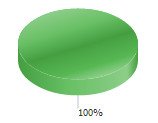I think I’ve lived through all the ages of Enterprise Manager. I used the Java console version back in the days when admitting you used it got you excommunicated from the church of DBA. I lived through the difficult birth of the web-based Grid Control. I’ve been there since the start of Cloud Control. I’ll no doubt be there when it is renamed to Big Data Cloud Pixie Dust Manager (As A Service).
I was walking from the pool to work this morning, checking my emails on my phone and it struck me (not for the first time) that I’m pretty much a 24 hour DBA these days. I’m not paid to be on call, I’m just a 9-5 guy, but all my Cloud Control notifications come through to my phone and tablet. I know when backups have completed (or failed). I know when a Tnsping takes too long. I know when we have storage issues. I know all this because Cloud Control tells me.
Now you might look on this as a bad thing, but being the control freak I am, I prefer to get a message on a Sunday telling me something is broken, hop on the computer and fix it there and then, rather than coming in on Monday to a complete sh*t-storm of users complaining. I’m not paid to do it, but that’s the way I roll.
While walking down memory lane I was thinking about all the scripting I used to do to check all this stuff. Endless amounts of shell scripts to check services and backups etc. I don’t do hardly any of that these days. Cloud Control handles all that.
We are a pretty small Oracle shop, but I think life would be a whole lot more difficult without Cloud Control. I’ve mentioned this a number of times, but it’s worth saying again… If you have more than a handful of Oracle databases, you really should be using Cloud Control these days. It’s as simple as that.
Just in case you are wondering, this is how our infrastructure looks this morning… 🙂

Cheers
Tim…
